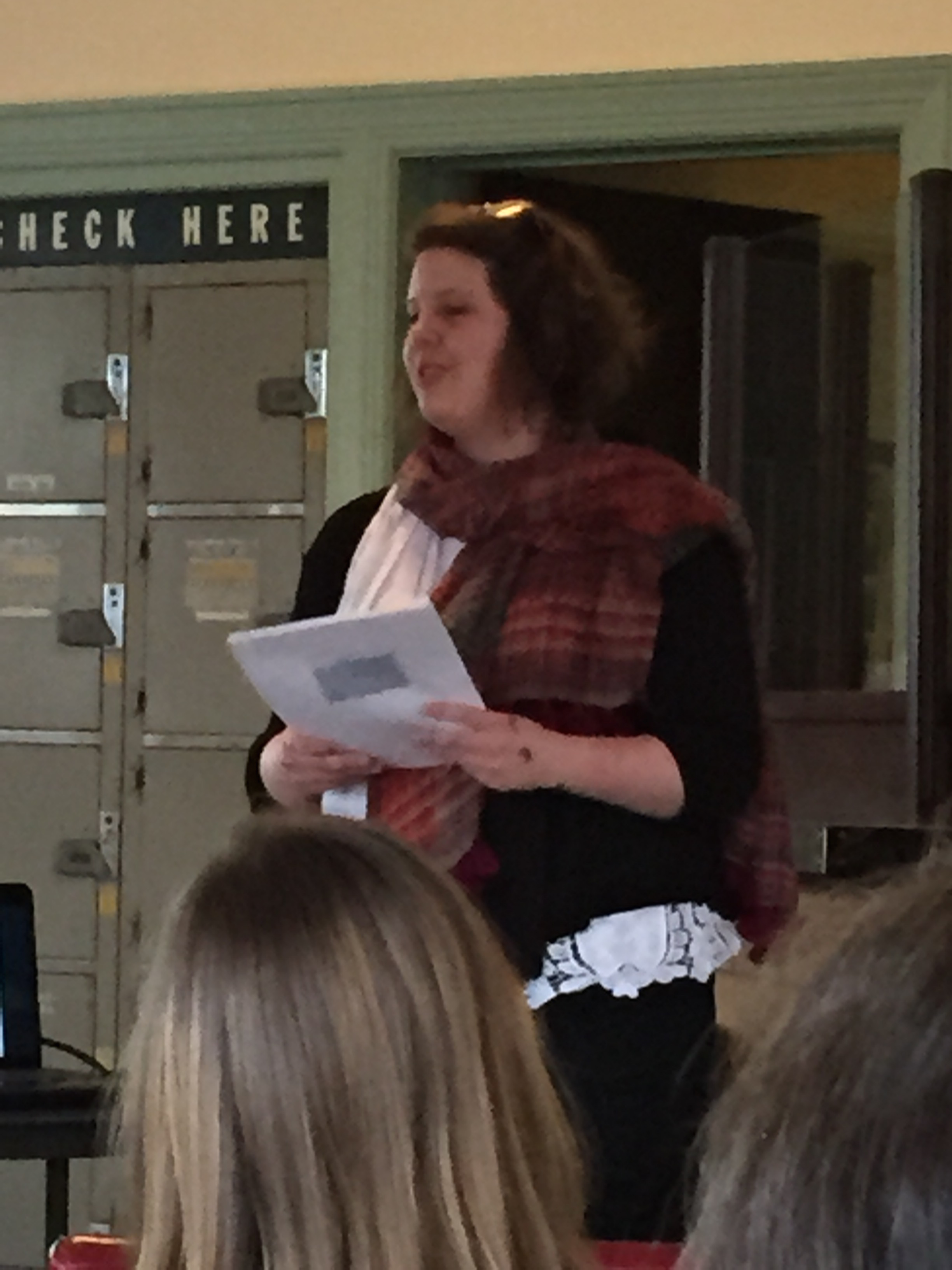Presenter: Quinn Ferris
Quinn Ferris is a graduate student at New York University’s Institute of Fine Arts and is completing her fourth year internship at the University of Virginia. On April 2 she presented one of her on-going treatments as an example of collections stewardship at UVA and libraries and archives preservation.

Beginning with a history of UVA and the Carter Library, Ferris explained that the Rotunda on the UVA campus originally housed the University’s library and was both the physical and academic center of the University. Ferris focused on one collection, the Albert and Shirley Small Special Collection, which prides itself on user access of its materials. Anyone with identification can obtain access to the materials, and the University even uses the collection to teach classes, including courses taught by the Virginia Rare Book School. Access is so important to the collection that the acquisition policy discourages purchasing objects with handling restrictions.
Equally important to access is authenticity. While library materials need to remain functional to be safely accessed, they are also prized for their historic integrity and the evidences of age and use. An example of these attitudes towards collections stewardship put into use is in the Carter Library, which was gifted to UVA in 1979 by the descendents of Landon Carter (1710-1778). The books within the collection are artifacts that contain bibliographic information about the treatment of library materials in the 18th century. Ferris offered as an example the tool mark on the binding of several books, which indicates that Carter brought many of his books to the same binder. Additionally, the various binding styles found within this collection are evidence that the library was built over a period of time as new binding styles were introduced. The overall condition of the collection is evidence of its use and care. Insect damage is found on some volumes, and cracked and blackened leather bindings are evidence of a past fire.
Ferris expanded upon one treatment she is currently undertaking. A three volume set of books entitled A journey through Albania and other provinces of Turkey in Europe and Asia, to Constantinople was selected for treatment in 2014. In one volume, a fold-out map that was detached from its stub had suffered extensive damage. Many of the printed plates within the volumes were brittle and had split along their plate marks. The back cover of the plate volume was detached and the spine was flaking, while the other two volumes were missing their spine pieces due to insect damage and the covers were either missing or tenuously attached. Examination of the bindings revealed that they are Publisher’s board bindings, or in-boards bindings, which comprise a textblock with sewn or sawn-in cords covered with paper over thin boards. This type of binding is of interest because it represents a transition between bespoke bindings and case bindings.
Ferris’ goals for treating the three volumes were to mend and consolidate damaged pieces and return them to their volumes, investigate modern conservation methods to provide options for existing damage that will decrease the chances of similar condition issues recurring, and that original binding characteristics are retained through sympathetic restoration techniques.
The map was repaired, lined, reattached to its stub, and folded into fourths (rather than into eighths by its original folds), which relieved pressure on the books’ fragile binding. The boards were reattached by joint tacketing, which is a method that involves drilling small holes into the shoulder of a spine and using linen thread to hitch the cover onto the text block. This method simulated the original attachement and integrated into the existing binding. The spine was lined with Japanese tissue and wheat starch paste, covered with wove paper, and allowed to dry, and then the inner hinge was reinforced with Japanese tissue before a pastedown was adhered to the inside cover. These steps were meant to reinforce the binding without hiding the conservation work.
Summarized by Greta Glaser.